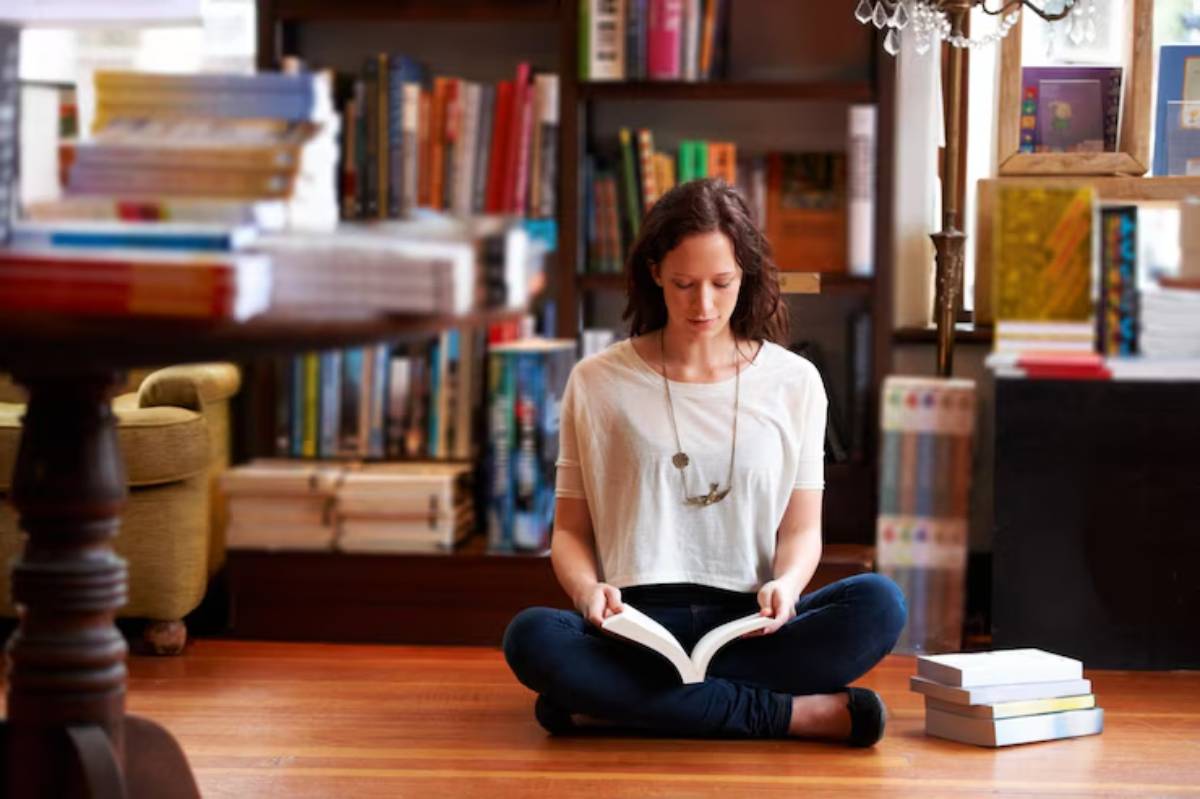The Personal Development Blog

Setting Time Limits Without Guilt
You tell yourself it’ll just be a few minutes. A quick scroll, a short video, a glance at your messages. Before you know it, an hour has passed—and you’re left wondering where your time (and attention) went. You think about limiting your screen time, but the moment you try, guilt creeps in. You feel like you’re overreacting. Or missing out. Or worse—disconnected.
You’re not alone.
Many people want to draw clearer social media boundaries, but feel conflicted. Part of them craves rest and focus. Another part worries about missing updates, falling behind, or seeming unresponsive. This push-pull is common, especially in a culture that treats constant availability as the norm.
In this article, we’ll show you how to limit screen time using practical strategies and digital minimalism apps, while also easing the guilt that often comes with it. Because setting limits isn’t selfish or antisocial—it’s a powerful act of self-care. And you can do it without sacrificing connection, productivity, or peace of mind.
Why We Struggle to Set Boundaries With Screens
Our digital tools are designed to be addictive. Social apps, notifications, newsfeeds, and streaming services are engineered to keep you engaged. So it’s no surprise that pulling away feels uncomfortable, even when you know it’s needed.
The guilt often comes from:
- FOMO (Fear of Missing Out): What if something important happens while I’m offline?
- Productivity anxiety: If I’m not constantly connected, am I being lazy?
- Social pressure: What will people think if I don’t reply right away?
- Cultural conditioning: We’ve been taught that “busy” equals “valuable”
This emotional load is what turns simple digital decisions—like logging off for the evening—into internal tug-of-wars.
Reframing Screen Time Limits as Empowerment
Rather than seeing screen time limits as restrictions, what if you saw them as tools for freedom?
Setting boundaries isn’t about avoiding life—it’s about protecting your energy so you can fully show up for it.
By creating intentional windows for digital activity, you’ll:
- Reduce distraction and regain focus
- Create space for rest, creativity, and real connection
- Feel less reactive and more in control
- Strengthen your relationship with yourself, not just your devices
Think of it like budgeting money. You don’t stop spending altogether—you simply decide where your time goes with purpose.
Real-Life Story: Leo’s Weekend Reset
Leo, a 42-year-old software engineer, noticed that weekends were flying by in a blur of YouTube, Reddit, and “just one more” TikTok. By Sunday night, he felt drained, not refreshed.
He decided to try a “screen-light” weekend approach: no social apps until noon, and no screens an hour before bed. He replaced those windows with short walks, reading, and intentional catch-ups with friends.
By the second weekend, he said, “I wasn’t bored—I was free. It felt like having space to hear my own thoughts again.”
It wasn’t about giving up his phone. It was about deciding how to use it—on his terms.
How to Set Screen Time Limits Without Feeling Guilty
Let’s explore practical strategies that help you stay intentional without spiralling into guilt, stress, or overthinking.
1. Start Small and Specific
You don’t need to overhaul your entire routine. Begin by choosing one time slot—like mornings before 9am or the last hour before bed—to go screen-free.
Framing it as a positive boundary (“This is my quiet time”) makes it easier to stick to than a strict rule (“No phone ever again”).
2. Use Digital Minimalism Apps as Allies
Tech can actually help reduce tech overwhelm.
Apps like:

- Freedom: Block distracting apps/sites for set periods
- Forest: Reward focus time by growing virtual trees
- Digital Wellbeing (Android) / Screen Time (iOS): Built-in trackers and app timers
- One Sec: Adds a pause before opening distracting apps to encourage intentional use
These tools give you structure, without the shame.
If you’ve already worked to clean up your smartphone for mental clarity, adding a screen time limiter app is the next step in creating a calmer digital environment.
3. Communicate Your Boundaries
Let friends or colleagues know you won’t be available during certain hours. A simple auto-reply or status update can prevent miscommunication and reduce your pressure to “be on.”
Example: “Hi there! I’m offline in the evenings to recharge. I’ll get back to you in the morning.”
It sets expectations while modelling healthy behaviour.
Replacing the Scroll: What to Do Instead
Often, we scroll not out of need, but habit. So when we limit screen time, we must fill the space with something meaningful.
Some scroll-alternatives people find helpful:

- Reading physical books or articles
- Journaling for 5–10 minutes
- Going for a short walk
- Calling a friend
- Sketching, stretching, meditating, or just sitting in silence
The point isn’t to be productive—it’s to reconnect with yourself without the background buzz.
This principle is central to digital minimalism—choosing fewer inputs so your mind can focus and flourish. If you’re curious about shaping that philosophy into daily practice, you can explore the core principles of digital minimalism for added support.
How to Handle Guilt (Without Letting It Win)
1. Name it
When guilt shows up, acknowledge it. “This is guilt talking.” Naming the emotion gives you distance and power.
2. Ask: What am I afraid of?
Often, guilt masks fear:
- “What if they think I’m ignoring them?”
- “What if I fall behind?”
- “What if I miss something important?”
Write the fear down. Examine it. 9 times out of 10, it’s less serious than your brain claims.
3. Remind yourself: Boundaries protect relationships
Healthy time limits don’t hurt your friendships, family, or work—they protect your energy so you can show up fully.
You can’t pour from an empty cup.
Real-Life Example: Nina’s Afternoon Break
Nina, a content manager, used to feel guilty about closing Slack or switching her phone to “Do Not Disturb.” “What if something urgent comes up?” she’d worry.
She started blocking out 90 minutes in the afternoon for deep work. She informed her team and promised to check messages right after.
The result? Higher-quality work, less burnout, and fewer emergencies—because most issues weren’t truly urgent after all.
Now, she guards her focus like it’s sacred. “Setting that time boundary felt awkward at first. Now, it feels like a gift.”
How Time Limits Help You Show Up Better
Screen time boundaries don’t disconnect you from life.
They help you engage more fully:

- In relationships: listen better
- At work: You focus more, multitask less
- With yourself: You notice your thoughts, feelings, and needs
It’s not about control—it’s about clarity. Less noise. More meaning.
And that clarity doesn’t just benefit you—it supports everyone around you.
What If You Slip?
You will. Everyone does. Guilt-free screen time boundaries allow for flexibility. Missed a no-phone evening? That’s okay. You’re human.
Ask:
- What led me to reach for my phone?
- Did I really need connection, distraction, or something else?
- What might help next time?
Use it as a check-in, not a chastisement.
Progress isn’t about perfection—it’s about building awareness and agency, one moment at a time.
Final Thoughts: You Don’t Owe Anyone Your Constant Availability
In a hyperconnected world, stepping back feels radical. But protecting your time and attention isn’t selfish. It’s wise.
Setting screen time limits without guilt is about choosing yourself, your rest, your focus, and your peace.
You don’t need to ditch your devices or disappear offline. You just need to draw gentle, firm boundaries that let you reclaim your mind and your day.
So here’s your nudge: Choose one time boundary this week. Morning, evening, midday—whatever feels doable. Honour it. Adjust as needed.
Because your clarity is worth protecting—and so is your joy.









